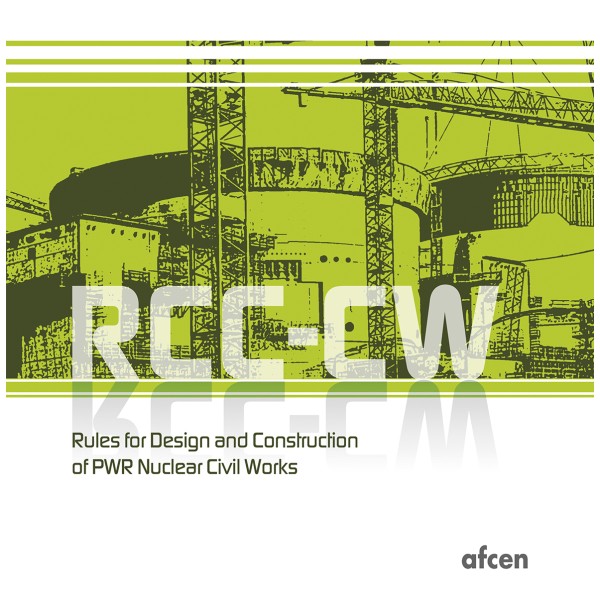RCC-CW 2021
Reference: AFC272
€1,500.00
unit price Tax excluded
Rules for design and construction of PWR nuclear civil works
Type:
Main edition
Edition year:
2021

Free Shipping

Our documents are under copyright
The AFCEN RCC-CW 2021 Edition includes the following improvements:
- Revision of terminology for pool temperature loads (DGENR)
- Improvement of the code requirements concerning water levels (DGENR)
- Evolution of requirements for liquefaction (DGEOT- CGEOT)
- Evolution of requirements for liner mean yield stress (DCONC, CCLIN)
- Evolution of requirements for lamellar tearing (DSTLW)
- Introduction of T head bolts and shear connectors (DANCH 5000, DANCH 6000)
- Evolution of requirement formulations in seismic appendix (DA)
- Improvement of the code requirements for Shrinkage (DB)
- Evolutions on the welding for anchors systems (CANCH)
- Evolution of construction joints (CCONC)
- Concerning Part AM (Ageing management):
o AMCONT: Clarification of ageing management requirements for containment,
o AMCONC: Ageing management for reinforced concrete structures (new chapter),
o AMGEOT: Ageing management for geotechnical structures and structures in strong interaction with the soil for soils and foundations (new chapter).
========
Erratas of the RCC-CW code have been published, follow this link: Erratas of RCC-CW code.
========
Erratas of the RCC-CW code have been published, follow this link: Erratas of RCC-CW code.

Collaboration and expertise
Take part in updating the codes
If you would like to modify a code, you can send your proposal to the relevant code subcommittee: download and complete the application form, then send the form to the subcommittee email address.
If you would like to understand the interpretation of a paragraph of the code: download the application form, enter your question and send the form to the email address of the relevant subcommittee.
If you want to benefit the nuclear industry from your feedback as a code user, share your expertise with AFCEN: download and complete the application form, then send it to the email address of the relevant subcommittee.




